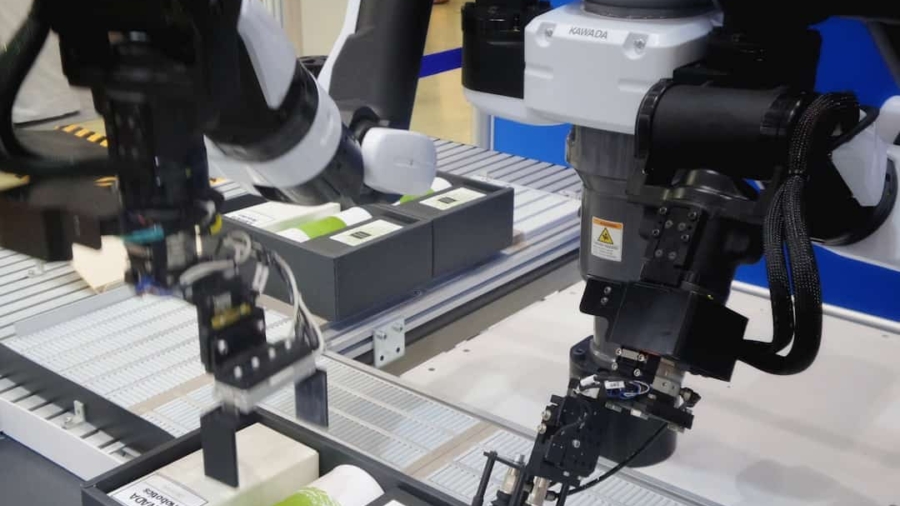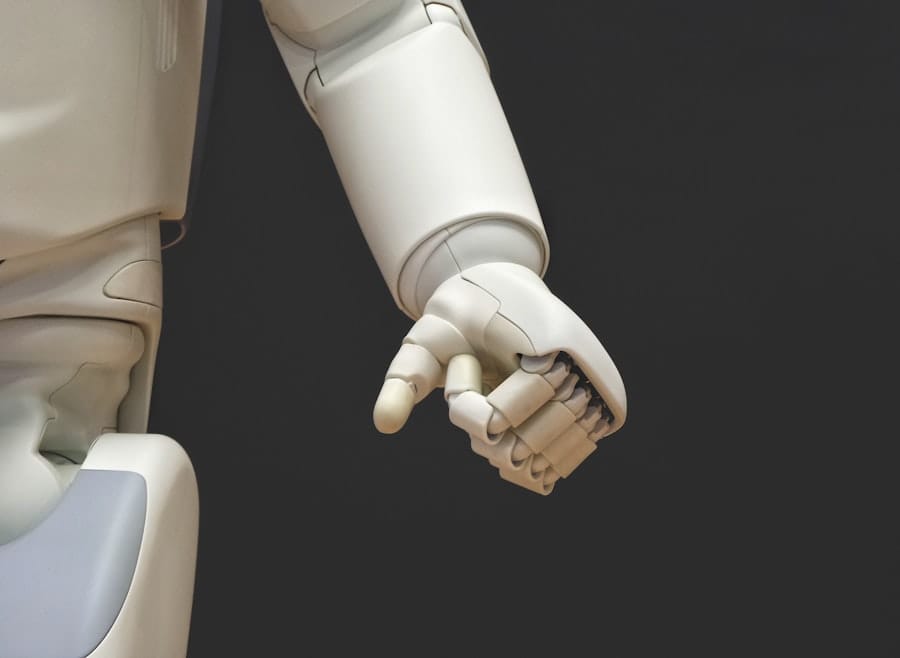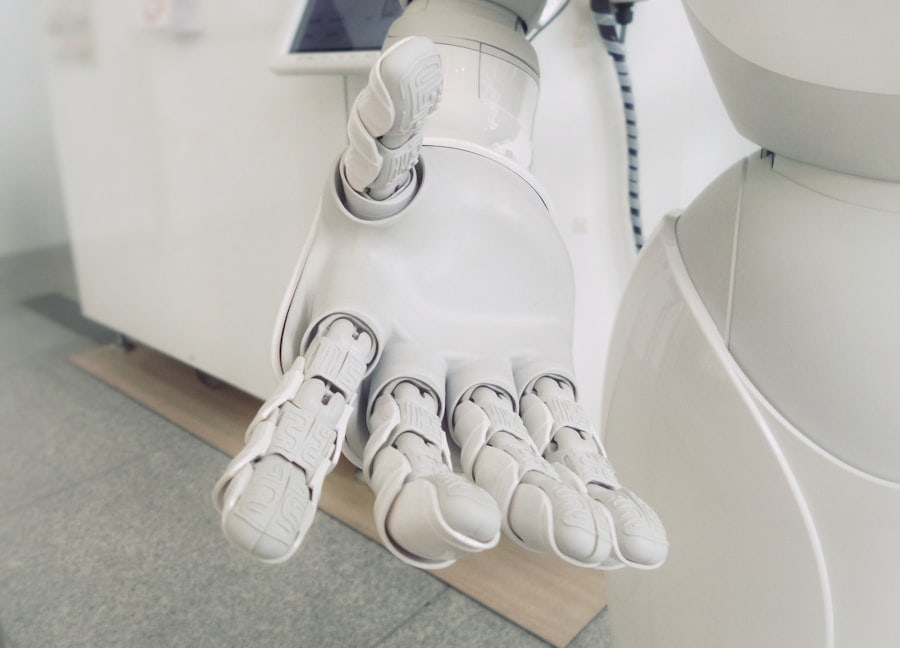Artificial Intelligence (AI) and robotics are two of the most transformative technologies of the 21st century, each playing a pivotal role in reshaping industries and enhancing human capabilities. AI refers to the simulation of human intelligence processes by machines, particularly computer systems, which can perform tasks such as learning, reasoning, and problem-solving. Robotics, on the other hand, involves the design, construction, operation, and use of robots—machines capable of carrying out a series of actions automatically.
The convergence of these two fields has led to significant advancements in predictive automation, where systems can anticipate future events and optimize processes accordingly. The integration of AI and robotics is not merely a technological evolution; it represents a paradigm shift in how we approach problem-solving and efficiency in various sectors. From manufacturing to healthcare, the ability to predict outcomes and automate responses has profound implications for productivity and operational effectiveness.
As organizations increasingly adopt these technologies, understanding their interplay becomes crucial for leveraging their full potential. This article delves into the roles of AI and robotics in predictive automation, exploring their benefits, challenges, and future trends.
Key Takeaways
- AI and robotics are revolutionizing the way businesses operate, offering predictive automation solutions that can streamline processes and improve efficiency.
- AI plays a crucial role in predictive automation by analyzing large volumes of data to make accurate predictions and automate decision-making processes.
- Robotics complements AI in predictive automation by executing physical tasks with precision and efficiency, reducing the need for human intervention.
- The integration of AI and robotics in predictive automation creates a powerful combination that can optimize operations and drive business growth.
- The benefits of AI and robotics in predictive automation include increased productivity, cost savings, improved accuracy, and the ability to handle complex tasks.
The Role of AI in Predictive Automation
Data Analysis and Insights
AI plays a fundamental role in predictive automation by enabling systems to analyze vast amounts of data and derive insights that inform decision-making processes. Machine learning algorithms, a subset of AI, are particularly adept at identifying patterns within data sets that may not be immediately apparent to human analysts.
Optimizing Business Operations
For instance, in supply chain management, AI can analyze historical sales data, seasonal trends, and external factors such as weather patterns to forecast demand more accurately. This predictive capability allows businesses to optimize inventory levels, reduce waste, and enhance customer satisfaction by ensuring that products are available when needed.
Real-time Processing and Adaptive Learning
Moreover, AI enhances predictive automation through real-time data processing and adaptive learning. In industries like finance, AI systems can monitor market conditions continuously and adjust trading strategies based on emerging trends. This dynamic approach not only improves the accuracy of predictions but also enables organizations to respond swiftly to changing circumstances.
Informed Decision-Making
By leveraging AI’s analytical prowess, companies can make informed decisions that drive efficiency and profitability while minimizing risks associated with uncertainty.
The Role of Robotics in Predictive Automation
Robotics complements AI in predictive automation by providing the physical means to execute tasks based on predictive insights. Robots equipped with advanced sensors and actuators can perform repetitive or complex tasks with precision and speed that surpass human capabilities. In manufacturing environments, for example, robotic arms can assemble products based on real-time data from AI systems that predict production needs.
This synergy between robotics and predictive analytics leads to streamlined operations and reduced downtime. Additionally, robotics enhances predictive automation in sectors such as agriculture and logistics. Autonomous drones can monitor crop health by analyzing data collected from various sensors, allowing farmers to make informed decisions about irrigation and fertilization.
The ability of robots to act on predictive insights not only increases operational efficiency but also frees human workers to focus on more strategic tasks.
Integration of AI and Robotics for Predictive Automation
The integration of AI and robotics is essential for achieving the full potential of predictive automation. This convergence allows for a seamless flow of information between intelligent systems and physical machines, creating a cohesive ecosystem that enhances operational efficiency. For instance, in smart factories, AI algorithms can analyze production data in real-time while robotic systems execute tasks based on those insights.
This interconnectedness enables manufacturers to adapt quickly to changes in demand or production schedules without significant delays. Furthermore, the integration fosters a feedback loop where robots can provide data back to AI systems for continuous improvement. For example, if a robotic system encounters an unexpected issue during production, it can relay this information to the AI system, which can then analyze the problem and suggest adjustments to prevent future occurrences.
This iterative process not only enhances the reliability of operations but also contributes to ongoing optimization efforts across various industries.
Benefits of AI and Robotics in Predictive Automation
The benefits of integrating AI and robotics into predictive automation are manifold. One of the most significant advantages is increased efficiency. By automating routine tasks and leveraging predictive analytics, organizations can streamline operations, reduce lead times, and minimize human error.
For instance, in the automotive industry, manufacturers have reported substantial reductions in production times due to the implementation of robotic assembly lines guided by AI-driven demand forecasts. Cost savings are another critical benefit associated with predictive automation. By optimizing resource allocation and minimizing waste through accurate predictions, companies can significantly lower operational costs.
In healthcare settings, predictive analytics powered by AI can help hospitals manage patient flow more effectively, ensuring that resources are allocated where they are needed most while reducing unnecessary expenditures related to overstaffing or underutilization of facilities.
Challenges and Limitations of AI and Robotics in Predictive Automation
Integration Complexity
Despite the numerous advantages offered by AI and robotics in predictive automation, several challenges persist that organizations must navigate. One significant hurdle is the complexity of integrating these technologies into existing systems. Many businesses operate on legacy systems that may not be compatible with modern AI or robotic solutions.
Infrastructure and Training Requirements
The transition requires substantial investment in infrastructure upgrades and employee training to ensure a smooth implementation process. This investment is crucial to overcome the technical hurdles and ensure that employees are equipped to work effectively with the new technologies.
Ethical Considerations and Workforce Impact
Moreover, ethical considerations surrounding AI and robotics cannot be overlooked. As these technologies become more autonomous, concerns about job displacement arise. While predictive automation can enhance productivity, it may also lead to workforce reductions in certain sectors. Organizations must address these concerns proactively by investing in reskilling programs for employees whose roles may be affected by automation.
Case Studies of Successful Implementation of AI and Robotics in Predictive Automation
Several organizations have successfully implemented AI and robotics for predictive automation, showcasing the transformative potential of these technologies across various industries. One notable example is Amazon’s fulfillment centers, where a combination of AI algorithms and robotic systems work together to optimize order processing. The company’s Kiva robots autonomously navigate warehouses to retrieve products based on real-time demand forecasts generated by AI analytics.
This integration has enabled Amazon to achieve remarkable efficiency levels while maintaining high customer satisfaction rates. In the healthcare sector, Siemens Healthineers has leveraged predictive analytics alongside robotic-assisted surgery systems to enhance patient outcomes. By analyzing patient data before procedures, the system can predict potential complications and suggest tailored surgical approaches.
This proactive strategy not only improves surgical precision but also reduces recovery times for patients, demonstrating how predictive automation can lead to better healthcare delivery.
Future Trends and Developments in AI and Robotics for Predictive Automation
Looking ahead, several trends are poised to shape the future landscape of AI and robotics in predictive automation. One emerging trend is the increasing adoption of edge computing, which allows data processing to occur closer to the source rather than relying solely on centralized cloud systems.
Another significant development is the advancement of explainable AI (XAI), which aims to make AI decision-making processes more transparent and understandable to human users. As organizations rely more heavily on AI-driven predictions for critical operations, ensuring that these systems can provide clear rationales for their decisions will be essential for building trust among stakeholders. Furthermore, as sustainability becomes a priority across industries, there will be a growing emphasis on developing eco-friendly robotic solutions powered by AI-driven efficiencies.
Innovations such as energy-efficient robots or those designed for waste reduction will likely gain traction as companies seek to align their operations with environmental goals. In conclusion, the integration of AI and robotics into predictive automation represents a significant leap forward in operational efficiency across various sectors. As these technologies continue to evolve and mature, their potential to transform industries will only grow stronger, paving the way for a future where intelligent machines work alongside humans to create smarter, more responsive environments.
In a recent article on enicomp.com, the top 5 smartwatches of 2023 were highlighted, showcasing the latest advancements in wearable technology. This article complements the discussion on predictive automation enabled by AI and robotics, as both topics delve into the innovative ways technology is shaping our daily lives. To read more about the top smartwatches of 2023, check out the article here.
FAQs
What is predictive automation?
Predictive automation is the use of artificial intelligence and robotics to anticipate and proactively address potential issues or tasks before they occur. It involves the use of data analysis and machine learning to predict future outcomes and automate processes accordingly.
How do AI and robotics combine to enable predictive automation?
AI and robotics combine to enable predictive automation by using advanced algorithms to analyze large amounts of data and make predictions about future events or needs. Robotics then carry out the necessary tasks based on these predictions, allowing for proactive and efficient automation of processes.
What are the benefits of predictive automation using AI and robotics?
The benefits of predictive automation using AI and robotics include increased efficiency, reduced downtime, improved decision-making, and cost savings. By anticipating and addressing issues before they occur, businesses can streamline their operations and better allocate resources.
What are some examples of predictive automation in practice?
Examples of predictive automation in practice include predictive maintenance in manufacturing, where AI and robotics are used to anticipate equipment failures and schedule maintenance proactively. In the healthcare industry, predictive automation can be used to forecast patient needs and optimize staffing levels accordingly.



